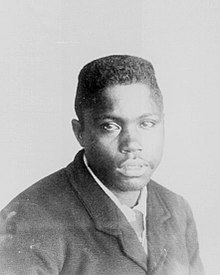Portal:Madagascar
The Madagascar Portal
Madagascar, officially the Republic of Madagascar, is an island country comprising the island of Madagascar and numerous smaller peripheral islands. Lying off the southeastern coast of Africa, it is the world's fourth largest island, the second-largest island country and the 44th largest country in the world. Its capital and largest city is Antananarivo. Following the prehistoric breakup of the supercontinent Gondwana, Madagascar split from Africa during the Early Jurassic, around 180 million years ago, and split from the Indian subcontinent around 90 million years ago, allowing native plants and animals to evolve in relative isolation; consequently, it is a biodiversity hotspot and one of the world's 17 megadiverse countries, with over 90% of wildlife being endemic. The island has a subtropical to tropical maritime climate. Madagascar was first settled during or before the mid-first millennium AD by Austronesian peoples, presumably arriving on outrigger canoes from present-day Indonesia. These were joined around the ninth century AD by Bantu migrants crossing the Mozambique Channel from East Africa. Other groups continued to settle on Madagascar over time, each one making lasting contributions to Malagasy cultural life. Consequently, there are 18 or more classified peoples of Madagascar, the most numerous being the Merina of the central highlands. Until the late 18th century, the island of Madagascar was ruled by a fragmented assortment of shifting sociopolitical alliances. Beginning in the early 19th century, most of it was united and ruled as the Kingdom of Madagascar by a series of Merina nobles. The monarchy was ended in 1897 by the annexation by France, from which Madagascar gained independence in 1960. The country has since undergone four major constitutional periods, termed republics, and has been governed as a constitutional democracy since 1992. Following a political crisis and military coup in 2009, Madagascar underwent a protracted transition towards its fourth and current republic, with constitutional governance being restored in January 2014. (Full article...) This is a Featured article, which represents some of the best content on English Wikipedia..
Chrysiridia rhipheus, the Madagascan sunset moth, is a species of day-flying moth of the family Uraniidae. It is considered one of the most impressive and appealing-looking lepidopterans. Famous worldwide, it is featured in most coffee table books on Lepidoptera and is much sought after by collectors, though many older sources misspell the species name as "ripheus". The colours originate from optical interference in the iridescent parts of the wings, while the black parts are pigmented. Adults have a wingspan of 7–9 cm (2.8–3.5 in). Dru Drury, who described the moth in 1773, placed it in the genus Papilio, considering it a butterfly. Jacob Hübner placed it in the moth genus Chrysiridia in 1823. Later redescriptions led to junior synonyms such as Chrysiridia madagascariensis (Lesson, 1831). (Full article...)Selected article - The Hova, or free commoners, were one of the three principal historical castes in the Merina Kingdom of Madagascar, alongside the Andriana (nobles) and Andevo (slaves). The term hova originally applied to all members of a Malagasy clan (possibly of the Zafiraminia people) that migrated into the central highlands from the southeast coast of the island around the 15th century and absorbed the existing population of Vazimba. Andriamanelo (1540–1575) consolidated the power of the Hova when he united many of the Hova chiefdoms around Antananarivo under his rule. The term Hova remained in use through the 20th century, though some foreigners transliterated that word to be Ankova, and increasingly used since the 19th century. In and after the 16th century, slaves were brought into Madagascar's various kingdoms, and social strata emerged in Merina kingdom. The Hova emerged as the free commoners caste below the nobles hierarchy. The subset of Hova related to the king by blood came under the title Andriana. The social structure of the new kingdom became further defined under his son Ralambo (1575–1612), who further subdivided the Andriana into four ranks. Ralambo was also the first to use the term Imerina (land of the Merina) to describe the land occupied by the Hova people, who thereafter gradually adopted the identity and label of Merina. (Full article...)This is a Good article, an article that meets a core set of high editorial standards.
Andriamanelo (fl. 1540–1575) was king of Alasora in the central highlands region of Madagascar. He is generally considered by historians to be the founder of the Kingdom of Imerina and originator of the Merina royal line that, by the 19th century, had extended its rule over virtually all of Madagascar. The son of a Vazimba mother and a man of the newly arrived Hova people originating in southeast Madagascar, Andriamanelo ultimately led a series of military campaigns against the Vazimba, beginning a several-decade process to drive them from the Highlands. The conflict that defined his reign also produced many lasting innovations, including the development of fortified villages in the highlands and the use of iron weapons. Oral tradition furthermore credits Andriamanelo with establishing a ruling class of nobles (andriana) and defining the rules of succession. Numerous cultural traditions, including the ritual of circumcision, the wedding custom of vodiondry and the art of Malagasy astrology (sikidy) are likewise associated with this king. (Full article...) General images -The following are images from various Madagascar-related articles on Wikipedia.
Selected panoramaLandscape near Fianarantsoa, Madagascar.
TopicsCategoriesSelected pictureAssociated WikimediaThe following Wikimedia Foundation sister projects provide more on this subject:
Discover Wikipedia using portals | |||












































































